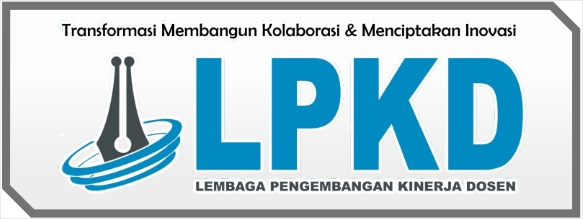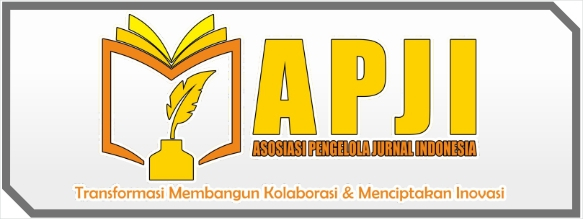Dokumentasi Keperawatan Berbasis Elektronik Meningkatkan Keselamatan Pasien dan Mutu Asuhan Keperawatan
DOI:
https://doi.org/10.59581/diagnosa-widyakarya.v1i3.1115Keywords:
electronic documentation, nursing care, patient safety, quality of careAbstract
Electronic-based nursing care in hospitals refers to the application of information technology and electronic systems in the process of providing care for patients. There are various impacts in the use of electronic nursing records that have implications for patient safety. The purpose of this study was to review the impact of using electronic-based nursing documentation on patient safety and quality of nursing care. The method used is literature review by searching articles in three electronic databases: PubMed, ProQuest, and Science Direct. The inclusion criteria used were articles that matched the research objectives, according to the specified keywords, were in English, full text and published until 2022. There were eleven research articles that met the inclusion criteria. The results of a literature review on the eleven articles illustrate that electronic-based nursing documentation has a positive impact on patient safety and the quality of nursing care. The use of electronic nursing documentation provides various benefits, such as efficiency in managing patient data, increasing accuracy and speed in processing information, and improving coordination and communication between health workers. In addition, two articles also convey the impact of using electronic nursing documentation which is considered detrimental in an effort to maintain patient safety. Thus, the information in this literature review can be useful for planning the development of strategies for implementing electronic-based nursing documentation in hospitals.
References
Alpert, J. (2016). The electronic medical record in 2016: Advantages and disadvantages. Digital Medicine, 2(2). https://doi.org/10.4103/2226-8561.189504
Bani Issa, W., Al Akour, I., Ibrahim, A., Almarzouqi, A., Abbas, S., Hisham, F., & Griffiths, J. (2020). Privacy, confidentiality, security and patient safety concerns about electronic health records. International Nursing Review, 67(2), 218–230. https://doi.org/10.1111/inr.12585
Bjerkan J, Valderaune V and Olsen RM (2021). Patient Safety Through Nursing Documentation: Barriers Identified by Healthcare Professionals and Students. Front. Comput. Sci. 3:624555. doi: 10.3389/fcomp.2021.624555
Bowman, S. (2013). Impact of electronic health record systems on information integrity: quality and safety implications. In Perspectives in health information management / AHIMA, American Health Information Management Association (Vol. 10).
Bridie McCarthy, et.al (2019). Electronic nursing documentation interventions to promote or improve patient safety and quality care. J Nursing Management.27:491–501.
Charalambous L, Goldberg S. (2016). ‘Gaps, mishaps and overlaps’: nursing documentation: how does it affect care? J Res Nurs. 21:638-48
Dudding, K. M., Gephart, S. M., & Carrington, J. M. (2018). Neonatal Nurses Experience Unintended Consequences and Risks to Patient Safety with Electronic Health Records. CIN -Computers Informatics Nursing, 36(4). https://doi.org/10.1097/CIN.0000000000000406
Hariyati, R. T. S., et al. (2018). Simplicity and completeness of nursing process satisfaction using nursing management information system at the public health service “X” Indonesia. International journal of caring sciences, 11(2), 1034-1042.
Hariyati RTS, Yani A, Eryando T, Hasibuan Z, Milanti A (2016). The Effectiveness and Efficiency of Nursing Care Documentation Using the SIMPRO Model. Int J Nurs Knowl. 27:136-42
Hastuti et al., (2022). Proses Dokumentasi Keperawatan. Yayasan Kita Menulis.
Hsu, H. H., & Wu, Y. H. (2017). Investigation of the effects of a nursing information system by using the technology acceptance model. CIN: Computers, Informatics, Nursing, 35(6), 316 - 322.
Jung H, Park HA. (2017). Use of EHR data to identify factors affecting the time to fall. Stud Health Technol Inform.245:1043-7. PMID: 29295260.
Kaihlanen, A. M., Gluschkoff, K., Saranto, K., Kinnunen, U. M., & Heponiemi, T. (2021). The associations of information system’s support and nurses’ documentation competence with the detection of documentation-related errors: Results from a nationwide survey. Health Informatics Journal, 27(4). https://doi.org/10.1177/14604582211054026
Laukvik, L. B., Lyngstad, M., Rotegård, A. K., Slettebø, Å., & Fossum, M. (2022). Content and comprehensiveness in the nursing documentation for residents in long-term dementia care: a retrospective chart review. BMC Nursing, 21(1), 84. https://doi.org/10.1186/s12912-022-00863-9
McCarthy, B., Fitzgerald, S., O’Shea, M., Condon, C., Hartnett-Collins, G., Clancy, M., Sheehy, A., Denieffe, S., Bergin, M., & Savage, E. (2019). Electronic nursing documentation interventions to promote or improve patient safety and quality care: A systematic review. Journal of Nursing Management, 27(3), 491–501. https://doi.org/10.1111/jonm.12727
Mulyani, Sri. (2016). Sistem informasi manajemen rumah sakit: Analisis dan perancangan (edisi kedua). Bandung: Abdi sistematika.
Nakate, G. M., Dahl, D., Petrucka, P., B. Drake, K., & Dunlap, R. (2015). The Nursing Documentation Dilemma in Uganda: Neglected but Necessary. A Case Study at Mulago National Referral Hospital. Open Journal of Nursing, 05(12), 1063–1071. https://doi.org/10.4236/ojn.2015.512113
Nguyen et al. (2014), Nguyen, L., Bellucci, E., & Nguyen, L. T. (2014). Electronic health records implementation: An evaluation of information system impact and contingency factors. International Journal of Medical Informatics (Vol. 83, Issue 11). https://doi.org/10.1016/j.ijmedinf.2014.06.011
Plantier, Morgane,et.al. (2017). Does adoption of electronic health records improve the quality of care management in France? Results from the French e-SI (PREPS-SIPS) study. Int J Med Inform. 102:156-165.
Qazi U, Haq M, Rashad N, Rashid K, Ullah S, Raza U. (2018). Availability and use of in-patient electronic health records in low resource setting. Comput Methods Programs Biomed. Oct;164:23-29.
Schenk E, Schleyer R, Jones CR, Fincham S, Daratha KB, Monsen KA. (2018). Impact of Adoption of a Comprehensive Electronic Health Record on Nursing Work and Caring Efficacy. Comput Inform Nurs. Jul;36(7):331-339.
Schnock, K. O., Kang, M. J., Rossetti, S. C., Garcia, J., Lowenthal, G., Knaplund, C., Chang, F., Albers, D., Korach, T. Z., Zhou, L., Klann, J. G., Cato, K., Bates, D. W., & Dykes, P. C. (2021). Identifying nursing documentation patterns associated with patient deterioration and recovery from deterioration in critical and acute care settings. International Journal of Medical Informatics, 153. https://doi.org/10.1016/j.ijmedinf.2021.104525
Tubaishat, Ahmad. (2017). Perceived usefulness and perceived ease of use of electronic health records among nurses: Application of Technology Acceptance Model. Inform Health Soc Care. Dec;43(4):379-389.
Walker‐Czyz, A. M. (2016). The impact of an integrated electronic health record adoption on nursing care quality. The Journal of Nursing Administration, 46, 366–372.













